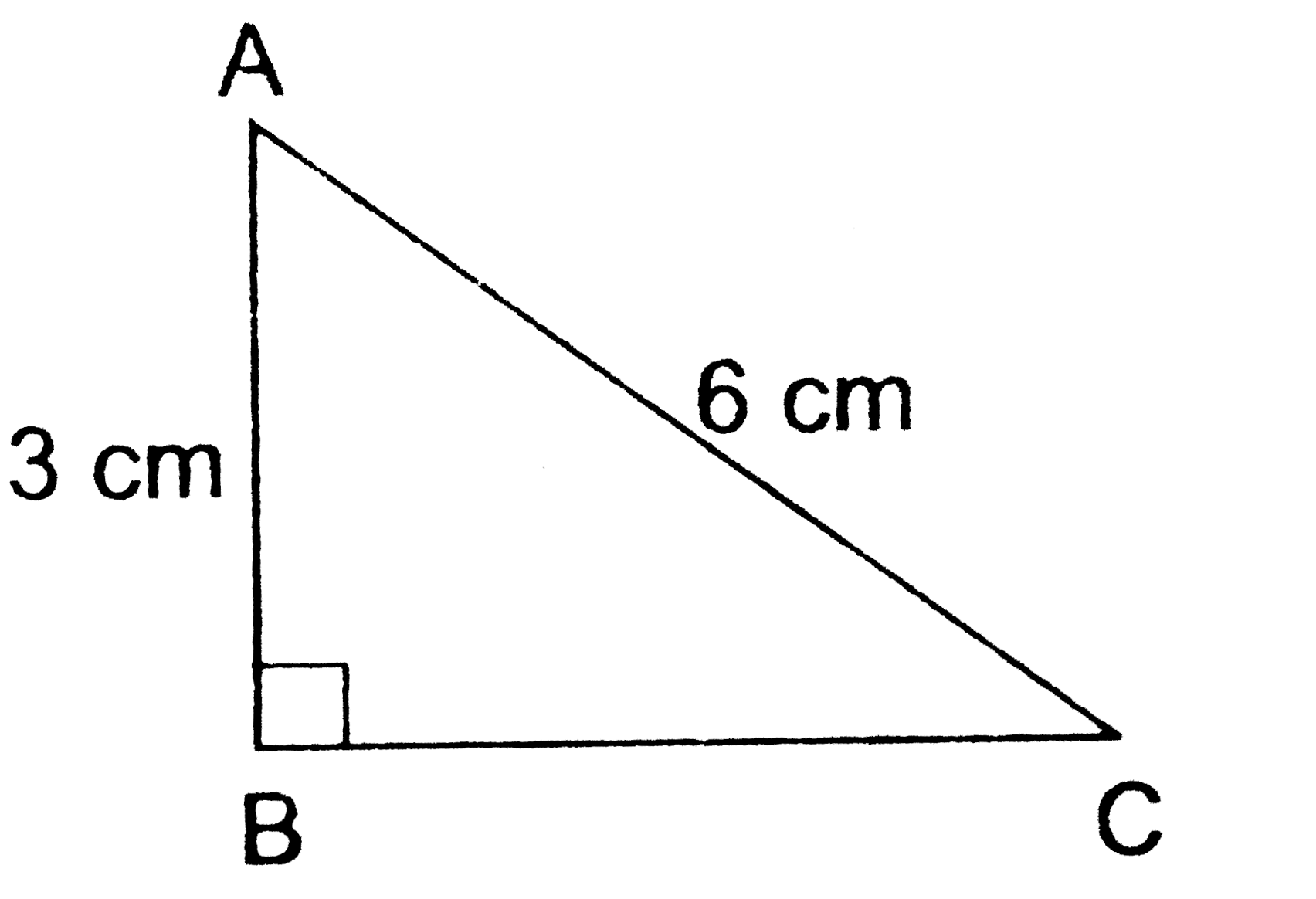In ΔABC∠A=∠B=60∘,AC=√13cm. The lines ADandBDintersect at D with ∠D=90∘. If DB=2cm, then the length of AD is
3 cm
3.5 cm
4 cm
4.7 cm
The correct Answer is:A
To solve the problem step by step, we will analyze the given information and apply the relevant geometric principles.
1. Understanding the Triangle: We have triangle ABC with angles ∠A=∠B=60∘. This means △ABC is an isosceles triangle, and since the sum of angles in a triangle is 180∘, it follows that ∠C=60∘ as well. Therefore, triangle ABC is equilateral.
2. Identifying the Sides: The side AC is given as √13 cm. Since triangle ABC is equilateral, all sides are equal. Thus, AB=AC=BC=√13 cm.
3. Drawing the Perpendiculars: We draw lines AD and BD such that they intersect at point D with ∠D=90∘. We are given that DB=2 cm.
4. Using Properties of the Triangle: In an equilateral triangle, if a perpendicular is drawn from a vertex to the opposite side, it bisects that side. Thus, since D is the foot of the perpendicular from A to BC, we can conclude that DC=DB=2 cm.
5. Calculating BC: The total length of side BC can be calculated as:
BC=DB+DC=2 cm+2 cm=4 cm
6. Applying the Pythagorean Theorem: Now, we will focus on triangle ADC, which is a right triangle. We can apply the Pythagorean theorem:
AC2=AD2+DC2
Substituting the known values:
(√13)2=AD2+(2)2
This simplifies to:
13=AD2+4
7. Solving for AD: Rearranging the equation gives:
AD2=13−4=9
Taking the square root of both sides:
AD=√9=3 cm
Final Answer:
The length of AD is 3 cm.
---
BC=DB+DC=2 cm+2 cm=4 cm
AC2=AD2+DC2
Substituting the known values:
(√13)2=AD2+(2)2
This simplifies to:
13=AD2+4
AD2=13−4=9
Taking the square root of both sides:
AD=√9=3 cm
The length of AD is 3 cm.
Topper's Solved these Questions
- BOOK - KIRAN PUBLICATIONCHAPTER - GEOMETRYEXERCISE - TRY YOURSELF25videos
GEOMETRY
- BOOK - KIRAN PUBLICATIONCHAPTER - GEOMETRYEXERCISE - QUESTIONS ASKED IN PREVIOUS SSC EXAMS (TYPE- XIII)70videos
GEOMETRY
- BOOK - KIRAN PUBLICATIONCHAPTER - DISCOUNTEXERCISE - Test Yourself10videos
DISCOUNT
- BOOK - KIRAN PUBLICATIONCHAPTER - LCM AND HCF EXERCISE - Test Yourself18videos
LCM AND HCF
Similar Questions
Knowledge Check
- Question 1 - Select One
In ΔABC,∠A=90∘,AD⊥BC and AD=BD=2cm. The length of CD is
A3 cmB3.5 cmC3.2 cmD2 cm - Question 2 - Select One
Two medians AD and BE of ΔABC intersect at G at right angles . If AD=9cmandBE=6cm, them the length of BD (in cm) is
A10B6C5D3 - Question 3 - Select One
In ΔABC∠BAC=90∘ and ADI_BC. If BD=3cm and CD=4cm, then the length of AD is
A3.5 cmB5cmC2√3 cmD6cm
ABCD is a rectangle. The diagonals AC and BD intersect at O. If AB = 32 cm and AD = 24 cm, then what is OD equal to ?
View SolutionIn a rectangle ABCD, diagonal AC and BD intersect each other at 0.If AB=32 cm and AD = 24 cm, find the length of OD.
View SolutionIn triangle ABC, ∠BAC=90∘andAD⊥BC. If BD = 3 and CD = 4 cm, then the length of AD is.
View SolutionIn right ΔABC, ∠B=90∘, AB=3cm and AC=6cm. Find ∠A.
 View Solution
View SolutionIn ΔABC,∠C=90∘ And D is a point on CB such that AD is the bisector of ∠A . If AC = 5cm and BC = 12 cm, then what is the length of AD ?
View Solution

